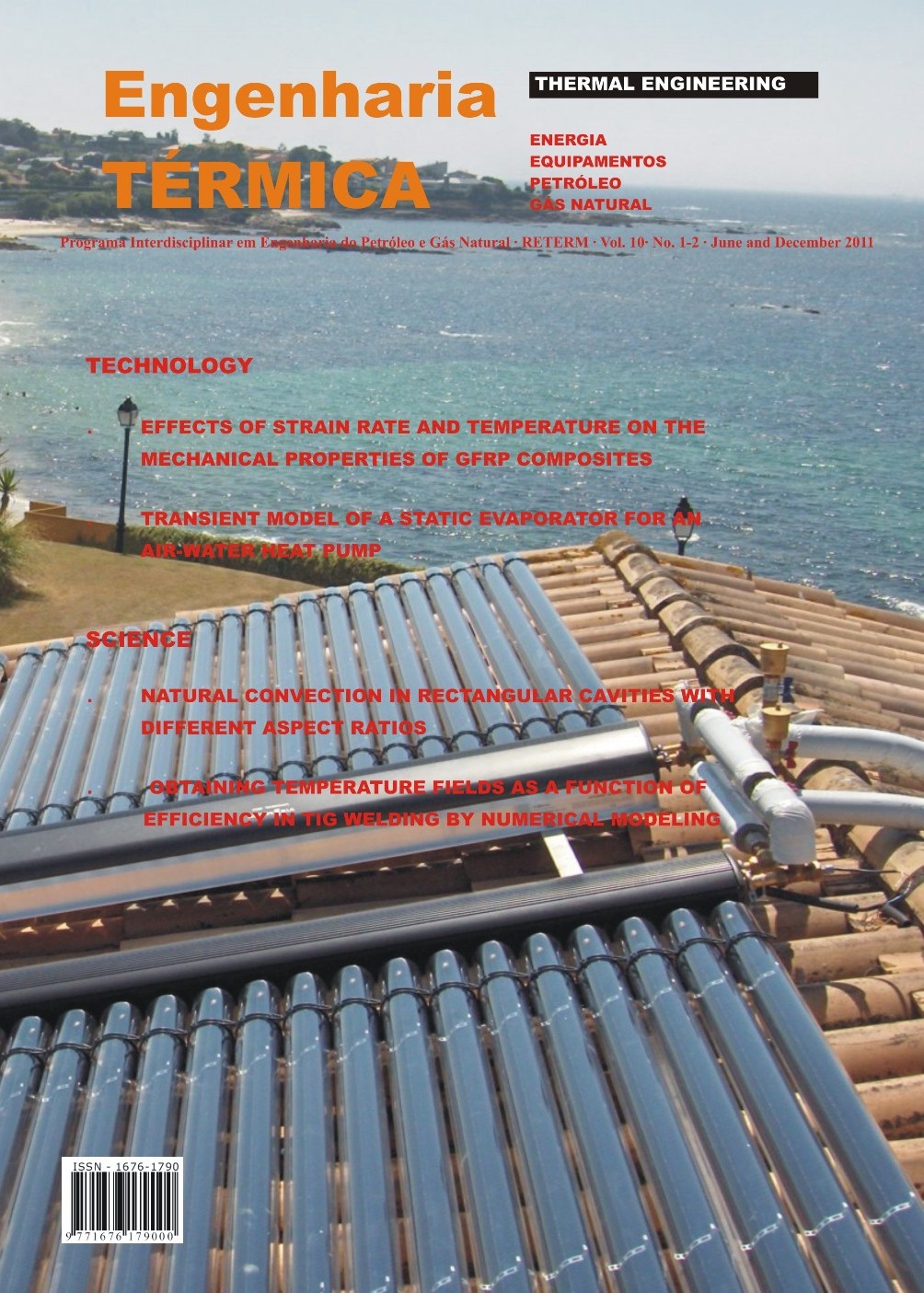OBTAINING TEMPERATURE FIELDS AS A FUNCTION OF EFFICIENCY IN TIG WELDING BY NUMERICAL MODELING
DOI:
https://doi.org/10.5380/reterm.v10i1-2.61952Keywords:
temperature field, residual stress, TIG weldingAbstract
The temperature field serves as the basis for predicting levels of residual stress in a welded joint. The aspects related to the mathematical modeling of complex welding procedures were pondered with the FEM: variations in the physical and mechanical properties of the materials as a function of the temperature, the transience and the speed of the welding process, the material phase transformations, the different mechanisms of heat exchange with the environment (convection and radiation), all them associated with a high level of nonlinearity. The heat source used in this analytical model for heat supply was the double ellipsoid model proposed by Goldak (2005), in which a 60 mm x 50 mm and 3 mm rectangular ASTM AH36 steel plate was used for the TIG process simulations. It was made a comparison of temperature fields for three different values of process efficiency (60%, 70% and 80%). The results showed many differences in the temperature fields following changes in the levels of residual stresses which will be determined in further studies.
Downloads
Published
How to Cite
Issue
Section
License
Direitos Autorais para artigos publicados nesta revista são do autor, com direitos de primeira publicação para a revista. Em virtude da aparecerem nesta revista de acesso público, os artigos são de uso gratuito, com atribuições próprias, em aplicações educacionais e não-comerciais.



